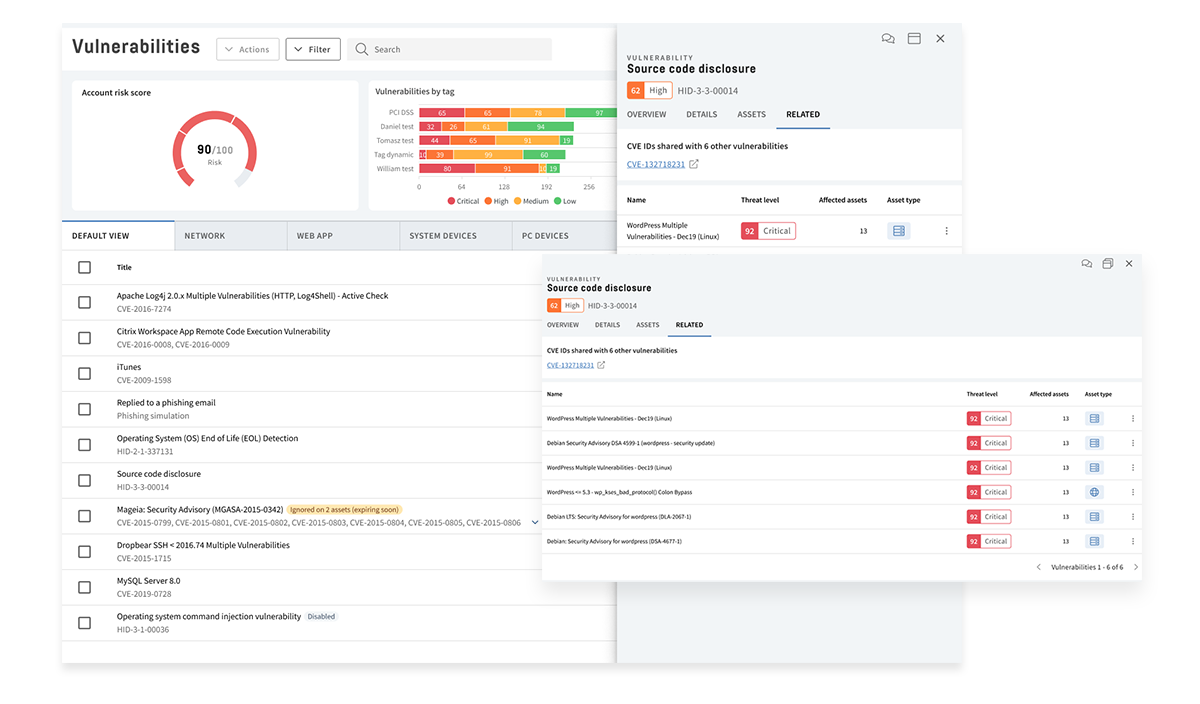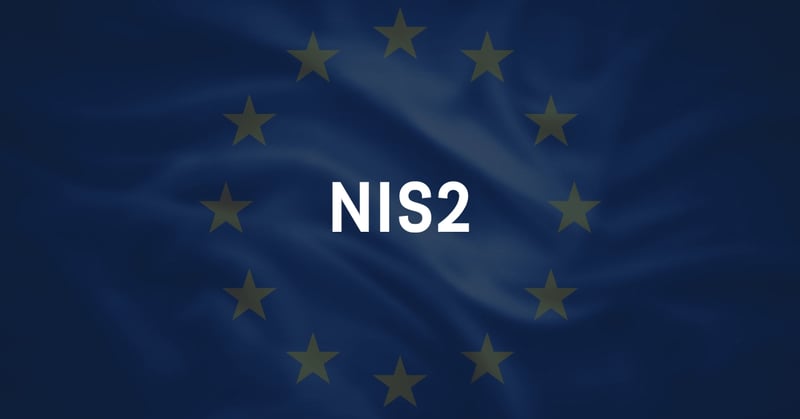Shrink Your API Attack Surface
The rapid adoption of APIs in internal and external business operations is a positive trend. However, it is essential to acknowledge the security implications of this growth and take measures to mitigate them. APIs are currently the number one attack vector for web applications. With the rise of API vulnerabilities, organizations must remain vigilant and prepared. Effectively address these challenges with our Next-Gen Vulnerability Management Platform.
Navigating the API Security Maze
APIs have revolutionized the way we share and consume data, enabling seamless communication between applications and systems. The rapid adoption of APIs does, however, provide cyber criminals with even more touchpoints to try and get into your organization. To keep APIs secure and reliable, you need to overcome these challenges:
Authentication & Authorization
When it comes to API security, we want to ensure that only the right people and applications can access the data and functionality provided by the API. A weak authentication system may be exploited in many ways, including using it to control user accounts, steal data, or engage in fraudulent actions.
Denial of Service (DoS) Attacks
Denial of service attacks can also be used to overload APIs and prevent legitimate users from accessing them. A lack of security measures can make APIs easy targets for DoS attacks that would otherwise be detectable, mitigated, or prevented.
Data Protection
APIs often deal with sensitive data, and ensuring that this data is protected both in transit and at rest is crucial. This requires implementing encryption, access controls, and other security measures to keep data safe.
Injection Attacks
APIs and web applications share the same language and technologies, which means they're prone to similar security risks and attacks like SQL injection.
Don't Spend All Your Time on Application Security
Talk to a security expert today. We’ll help you take steps to protect your data.
Unlock the Benefits of API Security
- Perform customized security scans to detect vulnerabilities like security misconfigurations and injection flaws from the OWASP Top 10 API security list.
- Conduct security scans on authenticated and unauthenticated APIs to secure your systems from all angles.
Seamlessly Incorporate Security Into All Aspects
- Seamlessly collaborate with your team through integration with your stack, including popular tools such as Slack, Jira, and more.
- Get detailed reports to showcase your security posture to customers and stakeholders, ensuring comprehensive coverage and transparency.



Discover & Remediate Weaknesses Where You Are the Most Vulnerable
Protecting your web applications has never been easier. With Web Application Security, you can easily scan your web applications and APIs for vulnerabilities and ensure OWASP Top 10 coverage.
Robust Protection of Web Applications & API
Sleep soundly knowing that your applications are protected against the latest threats. Our advanced technology detects a wide range of misconfigured and vulnerable web applications and APIs, automatically identifying web servers, programming languages, and databases.
Detect Vulnerabilities Early & Mitigate Risk
Bring critical risks to the forefront, ensuring that you're protected against potential security breaches. Stay one step ahead of the game with our cutting-edge web application scanner.
Full Visibility. Complete Security. Scan It All.
Elevate your API security effortlessly. Identify and resolve vulnerabilities, ensuring no potential entry points are left unscanned or exposed to attacks. Safeguard your externally facing applications confidently.
Effortless API Security
Fortify your APIs effortlessly for robust protection. Conduct thorough scans of REST, GraphQL, and SOAP endpoints, quickly assess security, and ensure up-to-date and secure entry points, so you can confidently catch new vulnerabilities.
Complete API Coverage
Gain complete visibility and coverage for API endpoints. Find vulnerabilities with tailored scans, targeting security misconfigurations and injection flaws from the OWASP Top 10 API security list. Rest easy knowing your APIs are comprehensively protected.
See For Yourself
Try Our Platform for Free Today!
See the Difference a Next-Gen Vulnerability Management Platform Makes
From local government to industry-leading retailers, discover how Holm Security helps solve cyber security problems.
Safeguard Your Business from Cyberattacks
Extend Visibility
Know what you're up against. We can help you identify your IT system's weak points, categorize the assets that are vulnerable, and pinpoint the most likely threats. This knowledge will help you take action to protect your business proactively.
Prioritize Action
Identifying risks is just the first step; you need to act on them. We can help you develop a clear action plan that prioritizes your actions based on the level of threat, potential impact, and resources.
Communicate Risk
Don't keep cyber security risks a secret - communication is key. Get a clear view of your business's cyber risk with Holm Security. Our platform provides security executives and business leaders with centralized and business-aligned insights, including actionable insights into your overall cyber risk.
Latest news

DORA decoded: Fusing operational resilience & vulnerability management
In this blog post, we're diving deep into DORA - why it's vital for digital service providers and financial institutions and why you should care about it.

Upgrade your cyber defense to comply with NIS2 - A step-by-step guide on how to prepare
This webinar will focus on the practical steps that IT departments need to take to improve their cyber security posture and adhere to NIS2 regulations.
Frequently Asked Questions
How Are API Endpoints Secured?
- Authentication: API endpoints should require authentication to ensure that only authorized users can access them. This can be done through mechanisms such as tokens, API keys, or OAuth.
- Authorization: In addition to authentication, APIs should also employ authorization mechanisms to ensure that authenticated users can only access the data and resources that they are authorized to access.
- Encryption: Sensitive data should be encrypted both in transit and at rest to prevent unauthorized access and protect data integrity.
- Rate limiting: APIs should implement rate limiting to prevent denial-of-service (DoS) attacks, where attackers flood the API with requests to overwhelm the system and cause a disruption.
- Input validation: APIs should validate input data to prevent injection attacks and ensure that only valid data is accepted.
- Regular testing: Regular security testing of API endpoints can help detect vulnerabilities and enable prompt remediation before they can be exploited.
- Monitoring and logging: Real-time monitoring and logging of API activity can help detect and respond to suspicious behavior, including potential attacks, and enable effective incident response.
How Secure Does a Public-Facing API Need To Be?
A public-facing API should be secure enough to prevent unauthorized access and protect sensitive data, but the level of security required may vary depending on factors such as the type of data being transmitted, the potential impact of a security breach, and regulatory requirements.
If the API handles sensitive information such as personal or financial data, it should employ robust security measures such as encryption, authentication, authorization, and rate limiting, among others. The API should also be regularly tested and monitored for vulnerabilities and suspicious activity.
If the API handles non-sensitive data or has a limited impact on the organization or its users, a lower level of security may be acceptable, but it should still employ basic security measures such as input validation and rate limiting to prevent attacks.
Overall, a public-facing API should strike a balance between security and usability, ensuring that it is accessible to legitimate users while adequately protecting data and resources. Organizations should carefully evaluate the security requirements of their public-facing APIs and implement appropriate security measures to mitigate risks and protect their users' data.
Why Should API Security Be a Top Priority?
API security is crucial due to APIs' role in facilitating communication and data exchange among various systems and services. This interconnectedness can introduce vulnerabilities that cybercriminals may exploit. With the growing adoption and integration of APIs in businesses' internal and external operations, they have become prime targets for cybercriminals aiming to gain unauthorized access to data or compromise systems. Such attacks can result in severe repercussions, including data breaches, financial losses, damage to reputation, and legal consequences. By implementing robust API security measures, you can effectively mitigate these risks and safeguard your organization's valuable data and resources.





